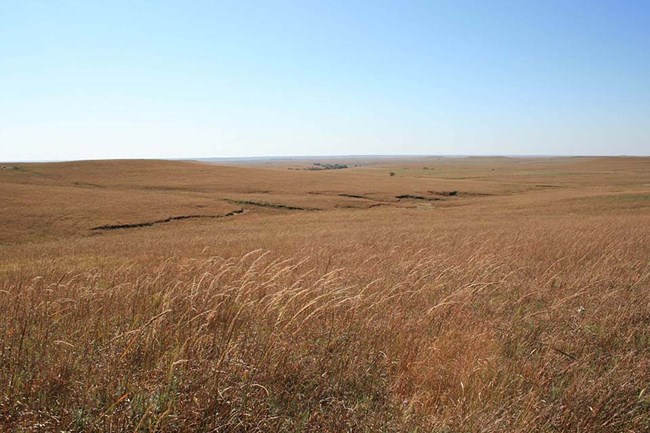
NPS-Photo
As of 2001, more than 400 species of vascular plants (native and non-native) had been identified at TAPR. The park is dominated by big bluestem, Indian grass, and little bluestem. A rich flora is associated with the margins of prairie springs, seeps, and streams. The park implements a varied fire and grazing regime meant to mimic the historic frequency of fire in the Flint Hills. While cattle graze most of the acreage on the park, one pasture is home to a small herd of American bison (Bison bison). Both cattle and American bison typically prefer to graze recently burned patches while leaving unburned patches mostly ungrazed.
Natural Resource Updates
Source: NPS DataStore Saved Search 3507 (results presented are a subset). To search for additional information, visit the NPS DataStore.
Source: NPS DataStore Collection 4260 (results presented are a subset). To search for additional information, visit the NPS DataStore.
Check out the links below for other interesting science information about your park:
Air Quality in Parks
Learn about the air quality at your park and how it has changed over time.
NPS Geodiversity Atlas
An interactive map to explore the full variety of natural geologic (rocks, minerals, sediments, fossils, landforms, and physical processes) and soil resources and processes that occur in your park.
NPSpecies
Find out what plants and animals are present in your park or other parks.
Last updated: May 7, 2020
